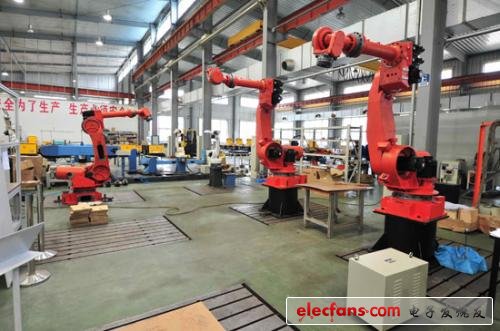During the 12th Five-Year Plan period, China will focus on the development of public safety robots, medical rehabilitation robots, bionic robot platforms, and modular core components. With policy support, the intelligent equipment manufacturing industry with robots as its core will usher in unprecedented market opportunities. The huge demand of the industrial robot market has also attracted the covetedness of international automation giants. For domestic enterprises, this will be an era where opportunities and challenges coexist.

Up to now, the four major giants in the industrial robot industry, ABB Switzerland, FANUC and Yaskawa Electric, and KUKA Germany have established branches and joint ventures in China. The four major enterprises have accounted for about 70% of the domestic market. Although Chinese college students can win the championship of the global intelligent robot competition, in the manufacturing field, they are still dominated by overseas companies such as Switzerland, Japan, and Germany.
Overseas companies have shown a monopoly in China's robot market, with a share of over 70% not only squeezing Chinese companies in the existing profit space, but in the future development, from technology to market may form "siege" for Chinese companies situation. Relevant departments and enterprises should recognize our defects, actively improve, and treat industrial robots and service robots differently, determine their different positioning and development strategies, and comprehensively drive the development of the robot market.
Domestic robot companies have no core competitiveness
At present, among the enterprises engaged in the production of industrial robot enterprises in China, there are not many enterprises with large scale and well-known brands. Many local industrial robot manufacturers rely on foreign imports for their spare parts. The cost of these spare parts accounts for more than half of the total cost, which limits the competitiveness of local industrial robot manufacturers.
Many disadvantages of Chinese enterprises:
First, the low-end technical level needs to be improved. Robot manufacturing includes aspects such as complete machine manufacturing, control systems, servo motors and drives, and reducers. The core technologies of control systems and reducers are still mastered by foreign companies. Domestic companies can only use the advantages of "assembly" and will be close to each Some modules are grouped together. Moreover, the lack of many spare parts has made domestic companies quite vulnerable in expanding the industrial chain, and the high import costs are also very likely to threaten the survival of the company.
Second, the industrial chain urgently needs to be enriched and standardized. Unlike the situation in other high-end equipment manufacturing fields, robot manufacturing is mainly concentrated in the private sector. Naturally, the scale of production capacity cannot be compared with aerospace and other industries, and R & D results cannot be demonstrated on a favorable platform. It is conceivable that the lack of state-owned assets is the biggest disadvantage of domestic manufacturing, and the lack of scale management of state-owned enterprises has led to an excessively loose industrial chain, which makes it impossible to develop in a cluster. In the mainstream industrial robot field, the cluster effect of supporting industries and equipment is the key to robot manufacturing. Only with a perfect industrial chain can profitability be improved.
China has lost the "number of cities" in the field of industrial robots, and catching up with the leading level in the future must be a long process. Funding, alliance with universities, and training of talents are indispensable. The key point is that the relevant departments should consider the characteristics of the industry in the guidance of the industry, form an enterprise cluster as early as possible, or gather excellent enterprises in the form of an industrial park to lay the foundation for entering high-end technology.
In addition, the service robot is a breakthrough in China's manufacturing. Compared with industrial robots, the manufacturing of service robots requires slightly lower technical capabilities, and there is no hard demand for supporting equipment, which is more in line with the current industrial situation in China. Starting with service robots can also benefit the needs of all levels of society.
The demand for robots in China has increased at a rate of 30% in recent years. Compared with countries with mature markets, the potential is huge. It is estimated that by 2015, the number of robots in service in China will reach 30,000.
Dash Cam Front And Inside,Dash Dual Cam,Dashcam For Cars,Sharper Image Dash Cam
SHENZHEN ROSOTO TECHNOLOGY CO., LTD. , https://www.rdtkdashcam.com